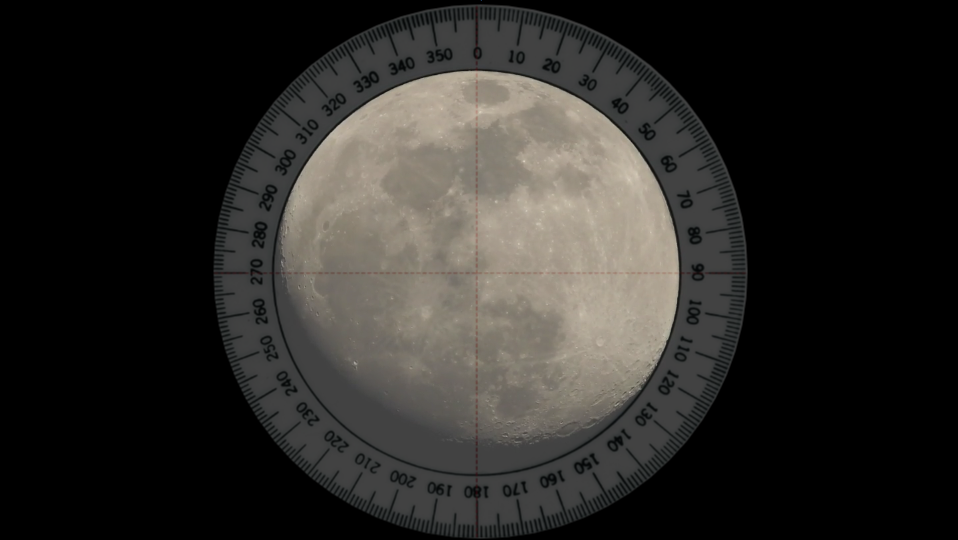- This topic has 6,423 replies, 23 voices, and was last updated 3 weeks, 2 days ago by
 Proclaimer.
Proclaimer.
- AuthorPosts
- February 23, 2019 at 5:54 pm#843692
 ProclaimerParticipant
ProclaimerParticipantHi MIke.
I found this video that talks about points we are discussing right now.
It might help solve some of the difficulties you are having understanding the science around these points.
Included is air pressure and moon radiation or whatever it is called, and boats being brought back from vanishing point.
February 24, 2019 at 12:12 am#843695 ProclaimerParticipant
ProclaimerParticipantThe South Pole
February 24, 2019 at 4:52 am#843696 GeneBalthropParticipant
GeneBalthropParticipantMike……Soon there will be flights anyone can take, even you can take and travel around this world from space, will you still contend then that everyone taking those flights are in conspiracy with each other? We already have thousands if not millions of pictures from space showing that the earth is indeed round, even eye wittnesses, but you keep rejecting every bit of “proof” given you, over and over?
T8…..you should know this descussion by now is futile at best, it has nothing to do with the kingdom of God, nor the truth about JESUS CHRIST our lord. It’s simply a diversion , I really can’t believe Mike doesn’t know the earth is not flat by now.
Peace and love to you and yours. …….gene
February 24, 2019 at 8:28 am#843701 Dig4truthParticipant
Dig4truthParticipantT8, in your example of comparing the ISS with a car tire you have compared “apples” to “oranges”.
A car tire may have 35 psi but the outside pressure is 14.7 psi. That is a small difference but it should be noted that a car tire is pretty darn strong! Not only is it designed to hold a greater pressure but also to support the weight of a car or truck! Not too small of a task.
Where the analogy fails is the outside psi (or lack there of). On earth at sea level it only needs to deal with about 2 times the amount of the outside pressure. The ISS would have to deal with perhaps a 1×10-7 difference! That is an astronomical number (excuse the pun).
If a car tire would have to deal with that kind of difference it would need 8 to 10 feet of concrete with a steel barrier also!
I don’t doubt that you have seen something that resembles the ISS overhead, many people have including myself. However, when thought about in a scientific way you may question if that was what you were seeing or not.
The ISS is only slightly larger than a jumbo jet. Yet when the jets are flying at a mere 30 to 40 thousand feet up they become very difficult to see because they are so small. Can we agree with this observation? I would say that they would not be visable at all if they were merely double that distance. Let’s say at 80,000 to 100,000 feet up we would not be able to see them with the unaided eye.
But what about 50 miles up? That’s 264,000 feet! What about 100 miles up? That’s 528,000 feet! Keep in mind that the ISS is around 250 miles up! That’s 1,320,000 feet up! Still think you saw the ISS the way in which they describe it?
If you can honestly say that you could see a jumbo jet at one million three hundred twenty thousand feet away then your eyes are better than anyone else’s on the plane earth!
February 24, 2019 at 1:58 pm#843709 ProclaimerParticipant
ProclaimerParticipantThe ISS is only slightly larger than a jumbo jet. Yet when the jets are flying at a mere 30 to 40 thousand feet up they become very difficult to see because they are so small. Can we agree with this observation? I would say that they would not be visable at all if they were merely double that distance. Let’s say at 80,000 to 100,000 feet up we would not be able to see them with the unaided eye.
It would be hard to see if it was not emanating light and it is even clearer to see because the light is coming from different angles. YOu would not see stars either if there was no light. A jumbo jet never come across as lit up like a star or the ISS probably because it is not high enough. But you can see jets at night by the small lights they do have. So if you can see a jet because of its flashing red light, then of course you can see the ISS if sunlight is reflecting from it. And remember, that the big panels probably make good reflectors.
February 24, 2019 at 2:36 pm#843711 ProclaimerParticipant
ProclaimerParticipantI admit to knowing little about pressure, but if the difference between 15 PSI in a vacuum is 15 PSI and a car tyre is 32 PSI in a 15 PSI environment, then the ISS has less pressure difference. So how is it suddenly 1×10-7 difference? Also, could you type the actual number out so I am sure what you are conveying or how much greater the difference actually is?
February 24, 2019 at 3:20 pm#843712 Dig4truthParticipant
Dig4truthParticipantSure no problem. That would be a 1 to 100,000,000 difference. But I could be overestimating or more likely underestimating the number. Case in point:
The ISS orbits at about 400 km altitude, which puts it in the Thermosphere. Now, A Puzzling Collapse of Earth’s Upper Atmosphere (2010) shows a density of around 10−12 kg per cubic meter in the Thermosphere, where the temperature varies between about 250 K at night and up to 3000 K in the daytime. Given that the atmospheric density at sea level and 273 K is about 1.225 kg per cubic meter, you can assume the pressure up there is also about one trillionth (or less) of the 101 kilopascals we have down here.
Or here:
Original question: “What is the atmospheric pressure outside the ISS? “
This is an excerpt from the New World Encyclopedia re: Vacuum.
“ In Low Earth orbit (about 300 kilometers altitude) the atmospheric density is about 100 nPa (10-9 Torr), still sufficient to produce significant drag on satellites. Most artificial satellites operate in this region, and they need to fire their engines every few days to maintain orbit.”
Vacuum – New World Encyclopedia
Looks like I underestimated it! I said 10-7 Torr.
https://www.quora.com/What-is-the-pressure-outside-the-ISS
February 24, 2019 at 3:57 pm#843713 ProclaimerParticipant
ProclaimerParticipantGreat, but let’s keep it simple if we can. Can you summarise this using PSI because I understand that.
February 24, 2019 at 4:00 pm#843714 mikeboll64Blocked
mikeboll64BlockedHey y’all, there’s about to be a live stream about some of my video footage. It’ll be interesting… https://youtu.be/IXqhhb_zIFs
February 24, 2019 at 11:11 pm#843722 ProclaimerParticipant
ProclaimerParticipantHi Mike.
Video not live yet, so ended up watching another live video for a bit.
February 25, 2019 at 2:03 am#843723 Dig4truthParticipant
Dig4truthParticipantThat link was dead Mike. But I found the new link for it.
Very interesting find! I get the feeling this will be talked about for awhile! Can’t wait to see more.
I wondered what an Alt/Az mount would have shown? If it ever stops raining here maybe I’ll set up my scope and see what happens.
February 25, 2019 at 2:28 am#843724 Dig4truthParticipant
Dig4truthParticipantT8: “Great, but let’s keep it simple if we can. Can you summarise this using PSI because I understand that.”
Ok, it would be 14.7 psi (the ISS pressure) to -100,000,000 psi (space vacuum). [with some estimates as low as -10,000,000,000 psi]
Suffice to say it is a huge difference in pressure!
Keep in mind that it is not the vacuum sucking out the air pressure, it is the air pressure inside the ISS wanting to explode into the negitive pressure of outer space.
If it were like a car tire with similar psi as on earth then the pressure inside the ISS would be the higher amount, say 35 psi and space would be 14.7 psi. (kind of reverse of what we have at sea level with the higher psi inside the tire.) But still not a great difference!
Hope that helps.
February 25, 2019 at 2:48 pm#843731 mikeboll64Blocked
mikeboll64BlockedYeah, D4T… it is a fantastic observation! There is no way in the helical model that the moon can rotate counterclockwise by 20 degrees in the twinkling of an eye! The moon is a part of God’s fantastically elaborate sky-clock, and now that we know what we’re looking for, the data should come piling in from everywhere. Before long, we’ll know exactly when the moon is going to “wave”, and when it’s going to “reset”. I’m proud to be a part of it.
T8, since you didn’t stick around for the live show, this 1 minute video is my time lapse of the event. Look at the 41-42 second mark for the rapid rotation…
And this one from a PhD scientist should help you with the vacuum issue. I’ve queued to a spot that you can just read the screen and get the gist of the problem. But it’s only 13 minutes long, and I’d recommend watching the entire thing…
February 25, 2019 at 2:52 pm#843732 mikeboll64Blocked
mikeboll64BlockedEd and T8, I’ll get to your last posts as soon as I can. Gene, make a statement of fact, and I’ll address it. Otherwise you’re just saying, “We know it’s a ball” over and over – and that isn’t saying anything. You must PROVE it’s a ball – using only evidence that regular people like you and I can verify for ourselves… ie: not alleged pictures of balls from space.
February 26, 2019 at 12:54 pm#843754 mikeboll64Blocked
mikeboll64BlockedHey guys, these are stills from that moon footage I took…


The jump from the first to the second occurred in less than 7 MINUTES… right before our eyes! The first was taken at 7:19, and the second at 7:26. Note also how the “shadow” rotated right along with the Sea of Crises (round dark spot at top center in the first photo). First of all, the moon cannot rotate 20 degrees in any direction within 7 minutes – let alone counterclockwise – in the standard model. Secondly, even if we had a funky moon that did occasionally just jam backwards really fast, how could the light from the sun also jam backwards right along with it? See what I mean? If you light a ball with a flashlight, rotating the ball is not going to change where the flashlight is hitting the ball, right? Guys, this is observational evidence that the moon’s light is NOT a reflection from the sun.
February 26, 2019 at 1:10 pm#843757 mikeboll64Blocked
mikeboll64BlockedEd: Hi Mike, I did not say you could not have “24 hour light”… …I said “Sun”…
You could not have “a 24 hour sun” on the flat earth model – you disagree ???
I cannot see how a 24 hour sun is possible on the flat earth as I currently understand it. But I couldn’t say it’s impossible. It’s a moot point for now anyway, since there is no verifiable evidence of a 24 hour sun in the Antarctic.
I started small and worked my way up, Ed. There are a billion things we just can’t answer right now. But at the same time, there are hundreds that we can directly verify – all of which directly contradict the heliocentric model. For example, you can verify for yourself that you see the Big Dipper all year round, right? In the heliocentric model, we’re looking out at a completely different patch of outer space every 3 months. The Big Dipper can’t be in all of them, right?
Anyway, I hope you keep at least looking into it and asking questions.
February 26, 2019 at 2:05 pm#843758 Dig4truthParticipant
Dig4truthParticipantYeh, Mike that is some crazy moon stuff there! Can’t wait to see what else is next!
What a great video, actually both of them! Keep us informed please!
Wow, just looking at the degree ring around the moon and it jumped 20 degrees! Wow!
February 26, 2019 at 10:46 pm#843772 ProclaimerParticipant
ProclaimerParticipantThe Moon Landings Happened!!
February 26, 2019 at 10:55 pm#843773 ProclaimerParticipant
ProclaimerParticipantOk, it would be 14.7 psi (the ISS pressure) to -100,000,000 psi (space vacuum). [with some estimates as low as -10,000,000,000 psi]
Suffice to say it is a huge difference in pressure!
Keep in mind that it is not the vacuum sucking out the air pressure, it is the air pressure inside the ISS wanting to explode into the negitive pressure of outer space.
If it were like a car tire with similar psi as on earth then the pressure inside the ISS would be the higher amount, say 35 psi and space would be 14.7 psi. (kind of reverse of what we have at sea level with the higher psi inside the tire.) But still not a great difference!
Hope that helps.
It sure does, because it shows I was on the right track to begin with.
If we can build a car tyre to withstand 32 PSI+ at sea level (15 PSI difference), then the ISS which has a difference of around 15 PSI within space or near space at around zero PSI, then it is not impossible as you are making out. Both need to hold around 15 PSI while existing in a lower PSI environment.
The idea that the ISS couldn’t handle space because it wouldn’t be able to contain 15 PSI in a zero PSI environment is a silly argument IMO.
February 27, 2019 at 1:04 am#843777 Dig4truthParticipant
Dig4truthParticipantT8, I’m not sure how you equate 0 psi with -100,000,000 psi! That’s a huge difference!
Notice the negitive sign before the huge number. It is way below 0 psi!
It is not 15 psi compared to 0 psi, it is 14.7 psi compared to -100,000,000 psi!
Didn’t mean to get you off track but put on the right track.
- AuthorPosts
- You must be logged in to reply to this topic.

